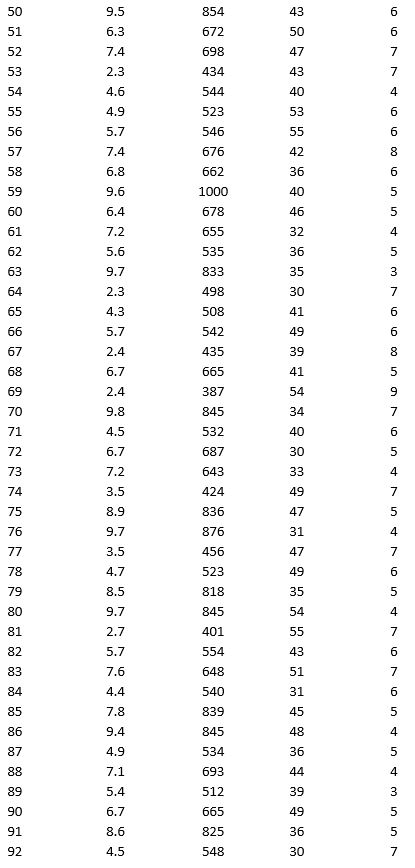Essay
As part of the quarterly reviews, the manager of a retail store analyzes the quality of customer service based on the periodic customer satisfaction ratings (on a scale of 1 to 10 with 1 = Poor and 10 = Excellent). To understand the level of service quality, which includes the waiting times of the customers in the checkout section, he collected the following data on 100 customers who visited the store.



Apply k-means clustering with k = 5 using Wait Time (min), Purchase Amount ($), Customer Age, and Customer Satisfaction Rating as variables. Be sure to Normalize input data, and specify 50 iterations and 10 random starts in Step 2 of the XLMiner k-Means Clustering procedure. Analyze the resultant clusters. What is the smallest cluster? What is the least dense cluster (as measured by the average distance in the cluster)? What reasons do you see for low customer satisfaction ratings?
Correct Answer:

Verified
We specify # Iterations = 50 and # Start...View Answer
Unlock this answer now
Get Access to more Verified Answers free of charge
Correct Answer:
Verified
View Answer
Unlock this answer now
Get Access to more Verified Answers free of charge
Q7: One minus the overall error rate is
Q12: A bank wants to understand better the
Q14: As part of the quarterly reviews, the
Q15: As part of the quarterly reviews, the
Q16: The lift ratio of an association rule
Q17: The impurity of a group of observations
Q19: As part of the quarterly reviews, the
Q20: A bank wants to understand better the
Q38: _ refers to the scenario in which
Q45: In which of the following data-mining process